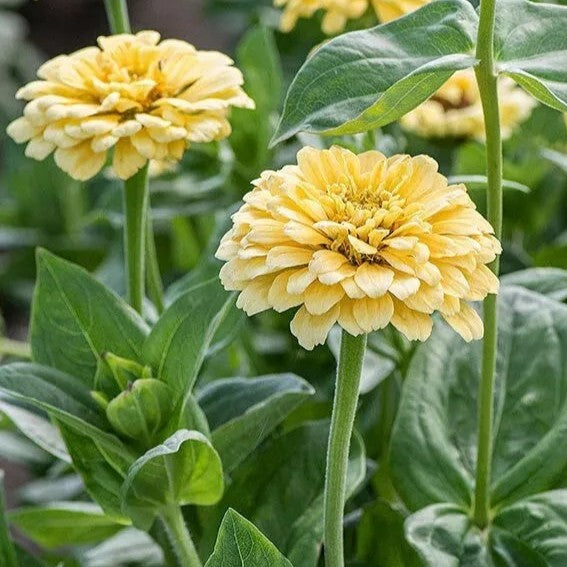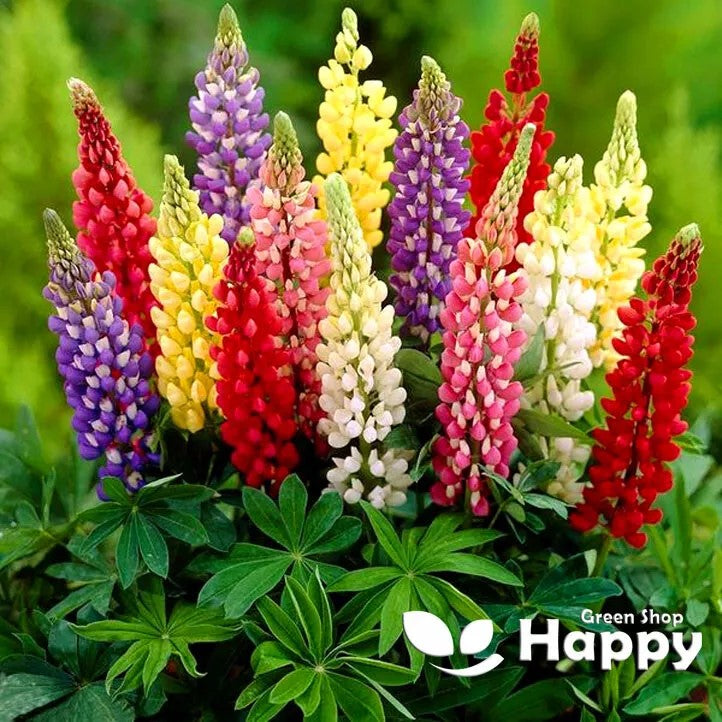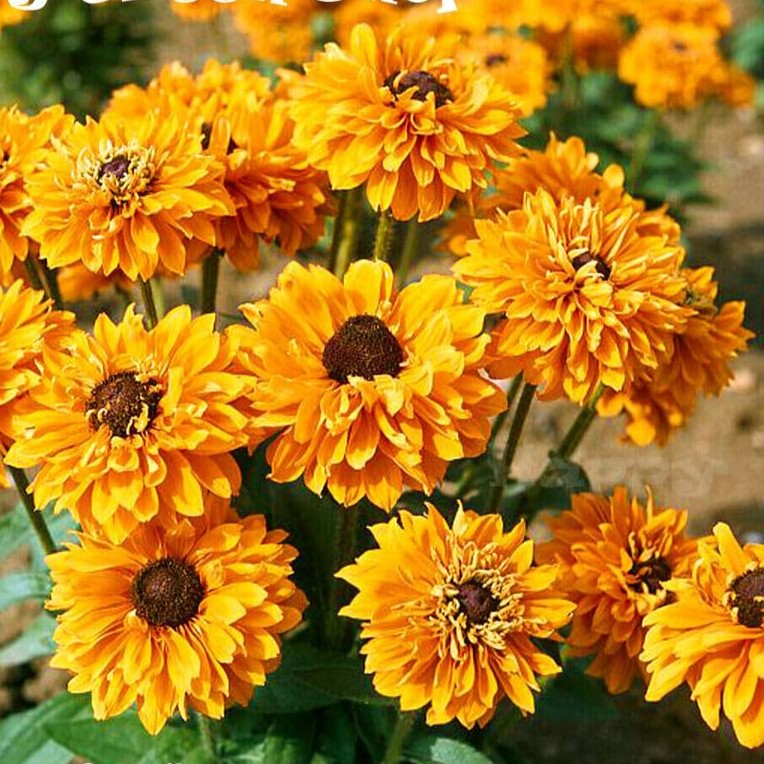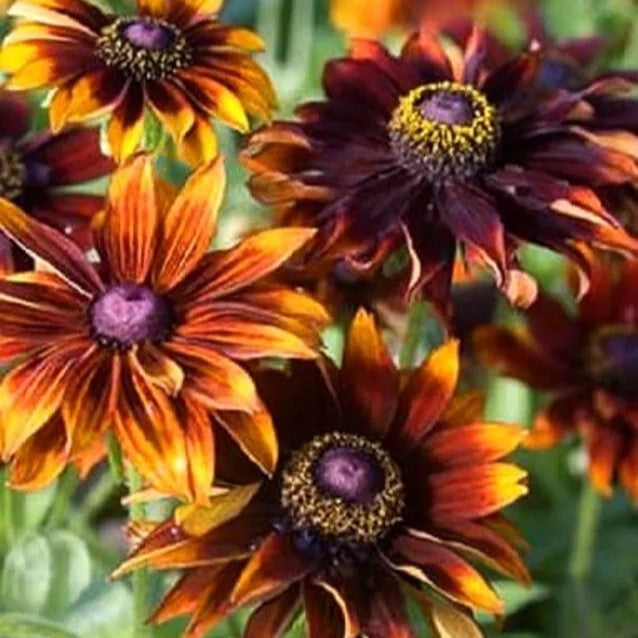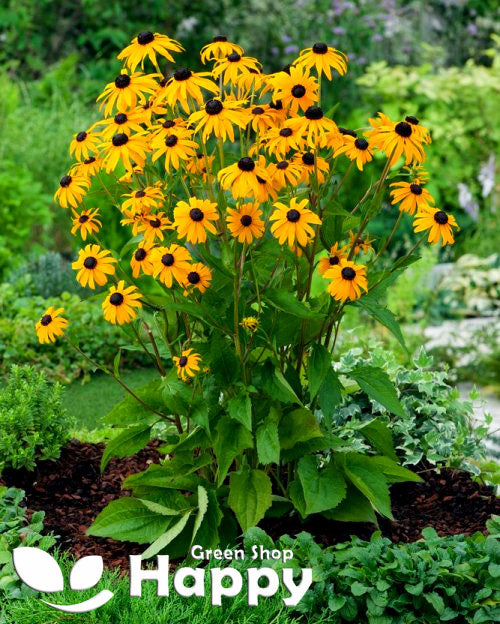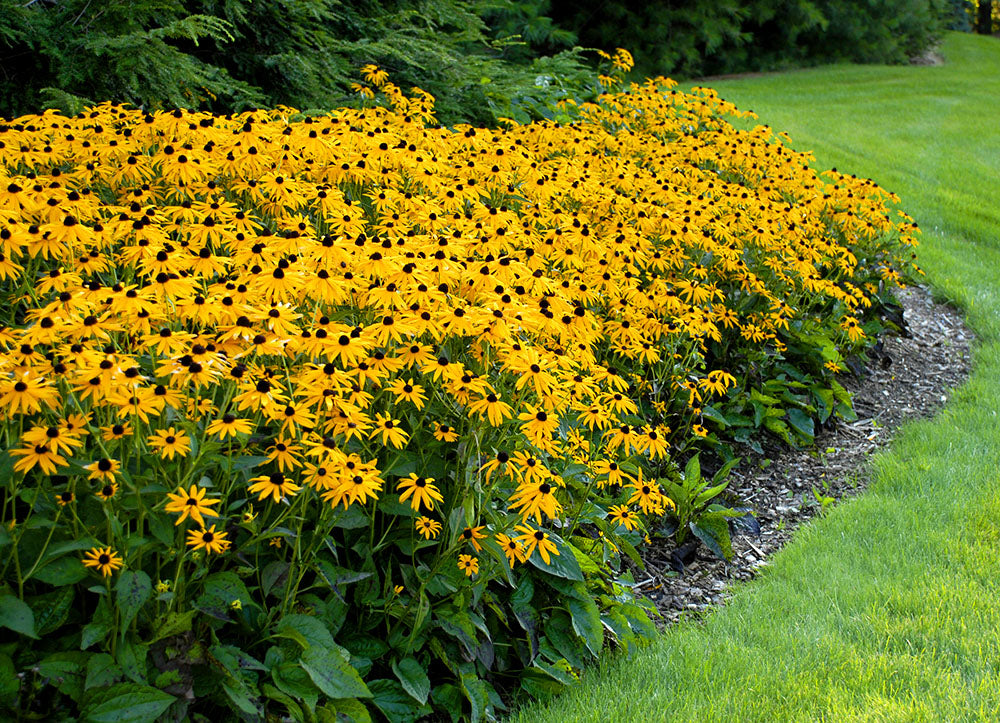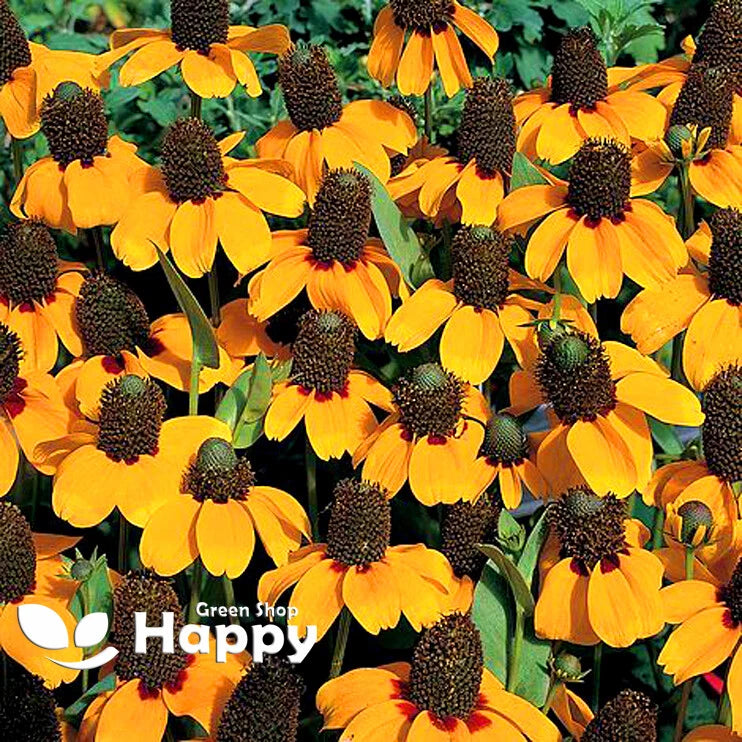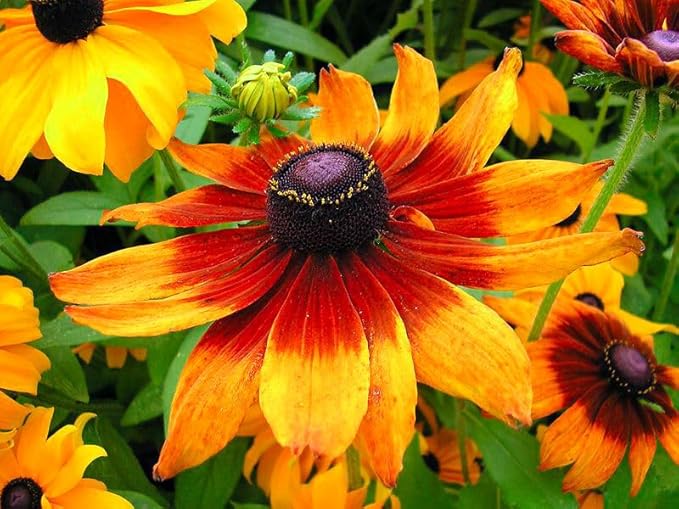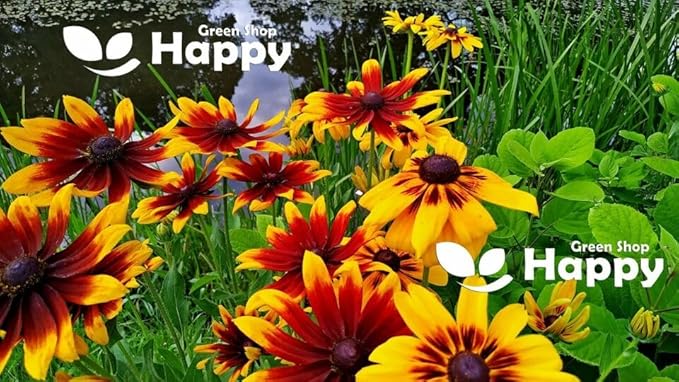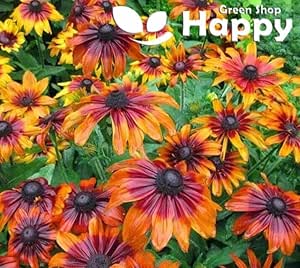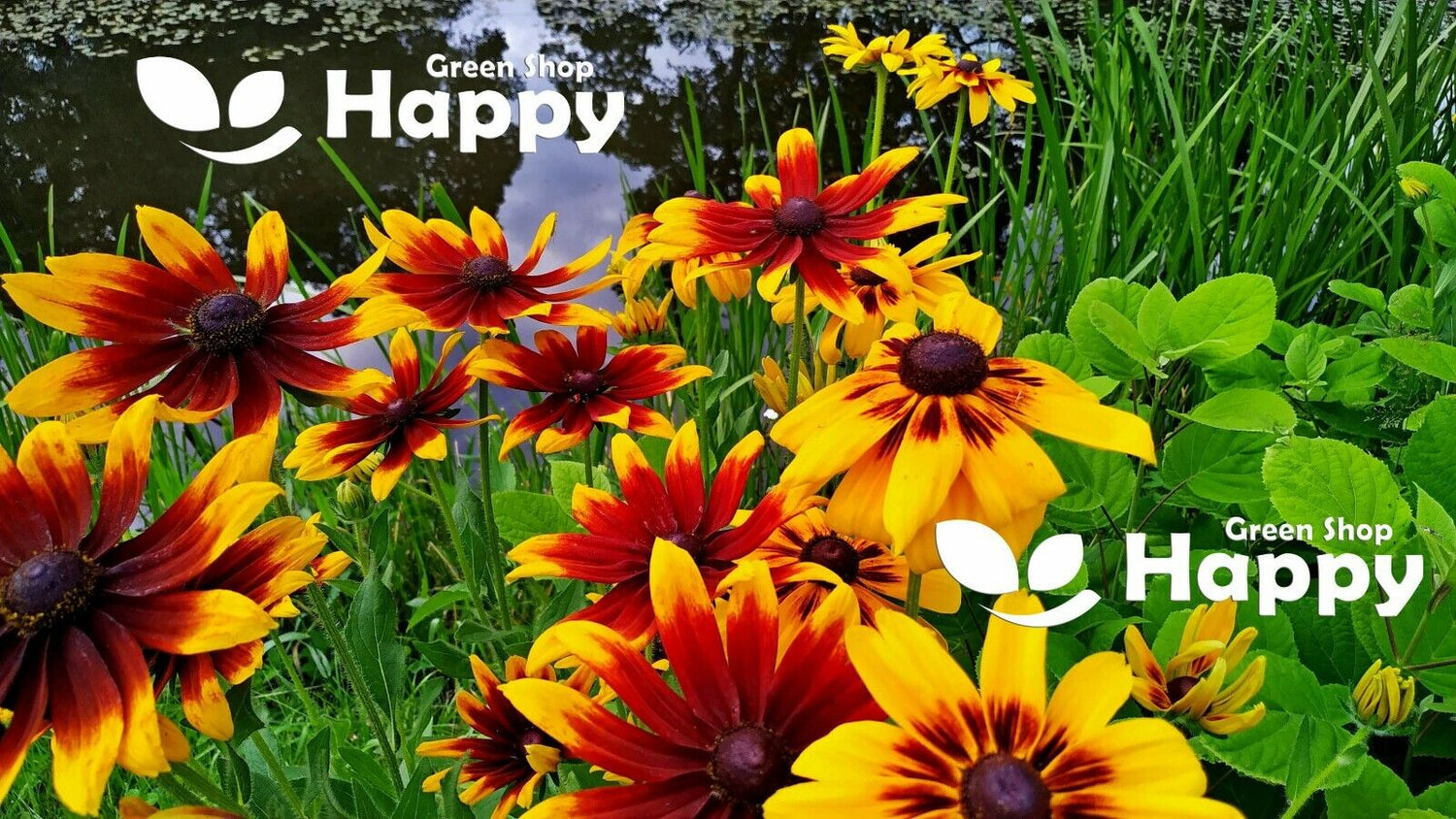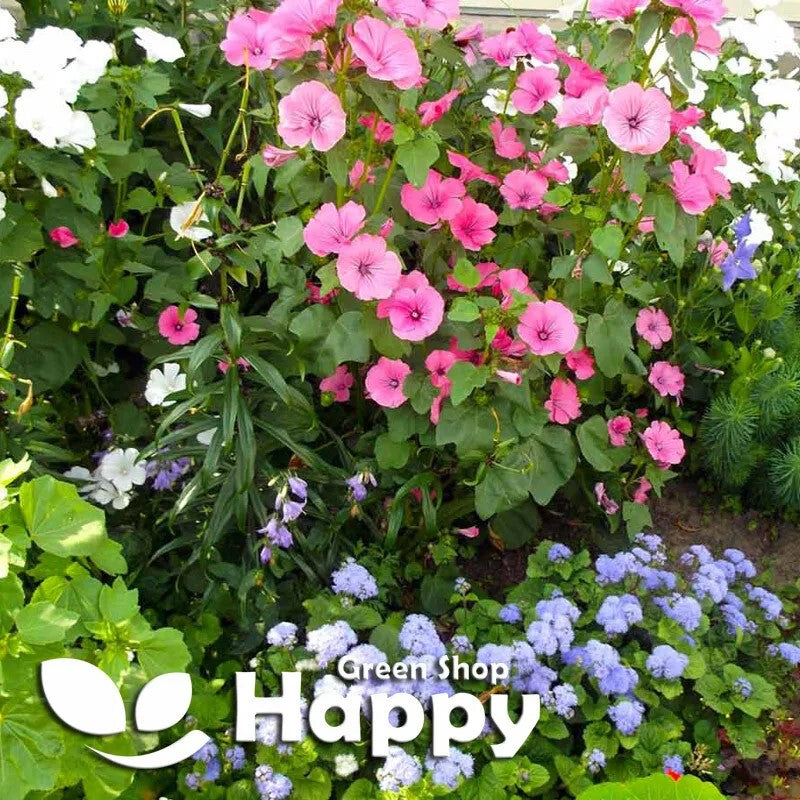Sort by:
287 products
287 products
Russell Lupine ‘Minarette Dwarf’ Mix – Seeds (Lupinus polyphyllus)
Russell Lupine ‘Minarette Dwarf’ Mix (Lupinus polyphyllus) is a charming, compact perennial producing dense, colorful spikes of pea-like flowers in a mix of vibrant shades. Blooming from late spring to early summer, this dwarf variety adds vertical interest and long-lasting color to borders, rock gardens, and cottage-style beds. Hardy, low-maintenance, and pollinator-friendly, it attracts bees and butterflies while brightening any garden space with its bold blooms.
Why Grow "Minarette Dwarf"
-
Dense, colorful flower spikes in vibrant shades
-
Long flowering season from late spring to early summer
-
Compact, hardy, and low-maintenance perennial
-
Pollinator-friendly and perfect for mixed borders
Key Features
-
Type: Perennial (Lupinus polyphyllus)
-
Height: 30–50 cm
-
Flowering: Late spring to early summer
-
Position: Full sun
-
Uses: Borders, rock gardens, cottage gardens, pollinator-friendly planting
Ideal For
-
Compact garden beds and dwarf border displays
-
Cottage and mixed perennial gardens
-
Pollinator-friendly garden schemes
-
Adding bold color to small spaces
Sowing & Growing
-
Sow indoors: February–April in trays or pots
-
Sow outdoors: April–May after frost
-
Germination: 14–21 days at 18–22°C
-
Thin seedlings 25–30 cm apart
-
Prefers well-drained soil in full sun
-
Mulch in winter for protection in colder regions
Rudbeckia ‘Goldilocks’ – 300 Seeds (Rudbeckia hirta)
Rudbeckia ‘Goldilocks’ is a cheerful annual that produces abundant bright golden-yellow daisy-like flowers with dark centers. Compact and free-flowering, it is perfect for borders, cottage gardens, and pollinator-friendly plantings. Its long-lasting blooms attract bees and butterflies, bringing vibrant summer color and wildlife interest to any garden.
Why Grow Rudbeckia ‘Goldilocks’?
-
Bright golden-yellow daisy-like blooms with dark centers
-
Compact, bushy growth ideal for borders and containers
-
Long-flowering, from summer into early autumn
-
Attracts pollinators such as bees and butterflies
Key Features
-
Type: Annual flower
-
Height: 40–50 cm
-
Spread: 30–40 cm
-
Flowering: July–October
-
Position: Full sun
-
Soil: Well-drained, moderately fertile
Ideal For
-
Borders and flower beds
-
Cottage and wildflower gardens
-
Pollinator-friendly landscapes
-
Containers and small gardens
Sowing & Growing
-
Sow indoors: March–April in trays or pots, lightly cover seeds
-
Germination: 7–14 days at 18–20°C
-
Transplant outdoors: After frost risk has passed, spacing 30 cm apart
-
Direct sow outdoors: April–May
-
Deadhead spent flowers to encourage continuous blooming
Rudbeckia 'Autumn Pine' Seeds (Rudbeckia hirta)
Bring warm autumn tones to your garden with Rudbeckia 'Autumn Pine'. This hardy annual produces daisy-like blooms in rich golden-yellow shades with dark contrasting centers, perfect for creating a glowing late-summer display.
What Makes It Special
-
Cheerful golden-yellow blooms with striking centers
-
Long-lasting flowers from summer to first frost
-
Hardy and low-maintenance—ideal for beginners
Key Features
-
Botanical name: Rudbeckia hirta
-
Annual (sometimes short-lived perennial)
-
Height: 50–70 cm
-
Spread: 30–40 cm
-
Flowering: July–October
Ideal For
-
Cottage gardens and borders
-
Pollinator-friendly planting
-
Cut flowers and late-season color
Sowing
-
Sow indoors: February–April at 18–21°C
-
Lightly cover seeds; germination in 14–21 days
-
Transplant seedlings outdoors after frost in a sunny spot
-
Direct sow outdoors: April–May
Rudbeckia 'Rustic Dwarf' Mixed Seeds (Rudbeckia hirta)
Rudbeckia 'Rustic Dwarf' Mixed is a compact, free-flowering variety producing a dazzling mix of warm autumnal colors including gold, mahogany, bronze, and red. Its large daisy-like flowers with dark central cones provide long-lasting color from summer into autumn and are loved by pollinators. Ideal for borders, containers, and cutting.
What Makes It Special
-
Compact dwarf habit – perfect for smaller gardens and pots
-
Fiery color blend that glows through summer and autumn
-
Easy to grow and low maintenance
-
Attracts bees and butterflies
Key Features
-
Botanical name: Rudbeckia hirta
-
Common name: Black-Eyed Susan
-
Seed count: Approx. seeds per pack
-
Height/Spread: 30–45 cm tall, bushy habit
-
Position: Full sun; well-drained soil
-
Flowering period: June–October
Ideal For
-
Brightening borders and bedding schemes
-
Patio pots and containers
-
Wildlife gardens and pollinator patches
-
Cut flower arrangements
Sowing Instructions
-
When to sow: February–April indoors; April–June outdoors
-
How to sow:
-
Sow on the surface of moist compost and cover very lightly with fine compost or vermiculite
-
Keep at 18–22°C; germination takes 7–21 days
-
-
Transplanting: Pot on seedlings when large enough; harden off before planting outside after frost
-
Care: Deadhead spent flowers to prolong blooming; water in dry spells.
Rudbeckia ‘Goldsturm’ – Seeds (Rudbeckia fulgida)
Description:
Add long-lasting summer color with Rudbeckia ‘Goldsturm’ (Rudbeckia fulgida). This hardy perennial produces striking golden-yellow, daisy-like flowers with dark centers on strong, upright stems. Blooming from midsummer to autumn, it attracts pollinators such as bees and butterflies and is perfect for borders, mixed beds, and cut flower arrangements. Easy to grow and low maintenance, ‘Goldsturm’ is a reliable favorite for any garden.
Key Features
-
Bright golden-yellow daisy-like blooms with dark centers
-
Hardy, long-lasting perennial
-
Blooms midsummer through autumn
-
Attracts bees, butterflies, and other pollinators
-
Strong, upright stems; ideal for cutting
Ideal For
-
Borders and mixed flower beds
-
Cottage and perennial gardens
-
Cut flower arrangements
-
Pollinator-friendly plantings
Sowing & Growing
-
Sow Indoors: February–April
-
Sow Outdoors: April–May, after frost
-
Germination: 10–14 days at 18–22°C
-
Height: 60–90 cm
-
Spacing: 30–40 cm apart
-
Light: Full sun
-
Soil: Fertile, well-drained
Care Tips
-
Deadhead faded blooms to extend flowering
-
Water moderately during dry spells
-
Divide clumps every 3–4 years to maintain vigor
-
Mulch in winter in colder regions
Rudbeckia ‘Clasping Coneflower’ – Seeds (Rudbeckia amplexicaulis)
The Clasping Coneflower is a hardy annual Rudbeckia that produces masses of golden-yellow petals marked with dark reddish-brown centers. With its long flowering season and striking daisy-like blooms, it’s ideal for brightening borders, meadows, and wildflower gardens. Heat- and drought-tolerant, it thrives in poor soils and attracts bees and butterflies.
Why Grow Clasping Coneflower?
-
Bright golden-yellow flowers with dark centers
-
Long flowering season, summer into autumn
-
Attracts pollinators
-
Easy to grow, drought-tolerant
Key Features
-
Type: Hardy annual
-
Height: 60–90 cm
-
Flowering: June–September
-
Position: Full sun, well-drained soil
-
Uses: Borders, meadows, wildflower gardens, cut flowers
Ideal For
-
Naturalistic and wildflower plantings
-
Low-maintenance garden borders
-
Pollinator-friendly spaces
Sowing & Growing
-
Sow outdoors: April–June directly into prepared soil
-
Germination: 10–20 days at 18–22°C
-
Thin seedlings to 20–30 cm apart
-
Deadhead for prolonged flowering
Rudbeckia ‘Cherry Brandy’ – Seeds (Rudbeckia hirta)
Rudbeckia ‘Cherry Brandy’ (Rudbeckia hirta) is a striking annual featuring rich, dark cherry-red blooms with a golden center. Blooming from summer to autumn, this compact, bushy plant adds bold color to borders, containers, and cottage gardens. Easy to grow and drought-tolerant once established, it attracts bees, butterflies, and other pollinators, making it both beautiful and wildlife-friendly.
Why Grow "Cherry Brandy"
-
Dark cherry-red flowers with golden centers
-
Long flowering season from summer to autumn
-
Compact, bushy, and easy-to-grow
-
Pollinator-friendly and drought-tolerant
Key Features
-
Type: Annual (Rudbeckia hirta)
-
Height: 40–60 cm
-
Flowering: Summer to autumn
-
Position: Full sun
-
Uses: Borders, beds, containers, pollinator gardens
Ideal For
-
Adding bold color to summer and autumn gardens
-
Cottage-style borders and mixed plantings
-
Containers and patio pots
-
Wildlife-friendly planting schemes
Sowing & Growing
-
Sow indoors: February–April in trays or pots
-
Sow outdoors: April–May after frost
-
Germination: 10–20 days at 18–22°C
-
Transplant seedlings 25–30 cm apart
-
Prefers well-drained soil in full sun
Rudbeckia 'Autumn Forest' – Seeds (Rudbeckia hirta)
Rudbeckia 'Autumn Forest' is a striking variety of Black-Eyed Susan with warm, fiery shades of red, bronze, orange, and golden yellow – like the colors of a glowing autumn woodland. Its daisy-like flowers with dark centers bloom generously over summer and early autumn, creating a bold display that attracts bees and butterflies.
What Makes It Special
-
Brilliant mix of autumn-toned blooms
-
Long flowering season with continuous color
-
Pollinator-friendly, attracting bees and butterflies
-
Excellent for cutting, borders, and containers
Key Features
-
Botanical name: Rudbeckia hirta
-
Common name: Black-Eyed Susan
-
Seed count: Approx. seeds per pack
-
Height/Spread: 45–60 cm tall, bushy habit
-
Position: Full sun; fertile, well-drained soil
-
Flowering period: June–October
Ideal For
-
Cottage gardens and wildlife-friendly borders
-
Pollinator-friendly plantings
-
Container displays
-
Cut flower arrangements
Sowing Instructions
-
When to sow: February–April indoors; April–June outdoors
-
How to sow:
-
Sow thinly on the surface of moist compost, press lightly, and cover very lightly with fine compost or vermiculite
-
Maintain 18–22°C; germination takes 7–21 days
-
-
Transplanting: Prick out seedlings when large enough; plant outdoors after frost
-
Care: Deadhead spent blooms to extend flowering. Water well in dry spells.
Rose Mallow Mix Seeds (Lavatera trimestris)
Rose Mallow Mix is an easy-to-grow annual producing large, showy, hibiscus-like flowers in shades of pink, rose, and white. Its upright, bushy habit makes it perfect for garden beds, borders, and cottage gardens. Loved for its long flowering season and ability to attract pollinators, it adds a splash of color and elegance to any garden.
What Makes It Special
-
Large, hibiscus-like blooms in a mix of pink, rose, and white
-
Long-flowering, adding color from summer to autumn
-
Compact, bushy growth habit suitable for mixed plantings
-
Attracts bees, butterflies, and other pollinators
Key Features
-
Botanical name: Lavatera trimestris
-
Variety: Mix
-
Seed count: Approx. seeds per pack
-
Height/Spread: 60–100 cm tall, 30–50 cm spread
-
Position: Full sun; fertile, well-drained soil
-
Flowering period: June–October
Ideal For
-
Borders and cottage garden beds
-
Containers and patio displays
-
Pollinator-friendly gardens
-
Cutting gardens for fresh floral arrangements
Sowing Instructions
-
When to sow: March–May indoors; April–June outdoors
-
How to sow:
-
Sow seeds 0.5–1 cm deep in seed trays or pots
-
Germination occurs in 10–14 days at 18–22°C
-
-
Transplanting: Plant seedlings outdoors 30–50 cm apart after frost risk has passed
-
Care: Water moderately; deadhead regularly to prolong flowering
Showing 90/287




